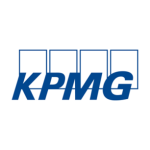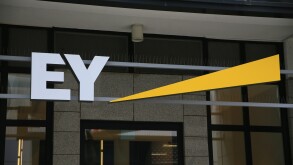VAT e-invoicing
As in other countries, China’s efforts to digitalise tax administration have accelerated in the last year of COVID-19 disruption with efforts to move to ‘zero-contact’ in a physical sense.
An important further step has now been made in relation to VAT, which is China’s most important tax in terms of revenue. China has been for many years a world leader in the adoption of VAT invoice pre-clearance processes. Under these, taxpayers must input invoice data into tax authority systems and obtain a unique code before an enterprise can issue a valid business-to-business (B2B) VAT invoice for which the counter-party can claim a VAT input credit; referred to as a ‘special’ VAT invoice.
In parallel, China has been a rapid adopter of e-invoicing, allowing companies to integrate their internal enterprise resource planning (ERP) systems with those of the tax authorities and automatically issue e-invoices to customers. However, to-date, e-invoicing was limited to so-called ‘general’ VAT invoices, which can be used to claim a corporate income tax (CIT) or individual income tax (IIT) deduction, but not a VAT input credit.
Starting from January 21 2021, China has now taken the further step to allow the issuance of ‘special’ VAT e-invoices. This will allow for further reduction in usage of paper processes and physical contact with the tax authorities. Up to now, large and mid-sized businesses had special machines to print off the ‘special’ VAT invoices that had been pre-cleared with the tax authority system; these would then be couriered to customers. Smaller businesses would often, instead of acquiring these machines, dispatch staff to the tax authority office to pick up the ‘special’ VAT invoices. The need for such time-consuming, costly, and physical contact intensive activity is now removed with ‘special’ VAT e-invoices.
Businesses are now in the process of determining whether to use self-developed e-invoicing platforms for integration with tax authority systems and issuance of the ‘special’ VAT e-invoices or to use the increasing number of third-party e-invoicing platforms; for the great mass of businesses the latter is expected.
The move to ‘special’ VAT e-invoices is also expected to facilitate a push by the tax authorities to ensure greater compliance by the multitude of small and mid-sized businesses selling goods and services through China’s booming e-commerce and sharing economy platforms. The latter, together with the third-party e-invoicing platforms, are expected to play a key role in this push to compliance. It should be noted, however, that, for the moment, solely newly registered taxpayers are permitted to issue ‘special’ VAT e-invoices. Following this pilot of the approach, it is expected to be extended to all existing taxpayers.
Voluntary compliance and tax penalties
In parallel with using data-driven approaches to foster greater tax compliance, the Chinese tax authorities are also leveraging ‘behavioural’ approaches. In this regard, on January 20 2021, China’s State Council (i.e. cabinet) set out a new penalty system for minor tax offences.
The so-called ‘first breach without penalty’ system can exempt taxpayers from punishment where their non-compliance behaviours (i) have occurred for the first time; (ii) can be rectified in a timely manner; and (iii) did not lead to significant harm.
This national regime builds on a pilot in the Yangtze River Delta area since August 2020 and on public consultation by tax authorities in Beijing, Tianjin and Hebei (BTH consultation). Under the BTH consultation, a list was set out of the 21 items for which this new approach could be applied, including tax registration/de-registration, tax filing, invoice issuance.
National guidance on the items covered by the new approach is yet to be issued. The intent of these changes is to encourage the vast majority of taxpayers who wish to be tax compliant to be open with the tax authorities, rather than hiding unintentional errors, and allow the tax authorities to focus their resources on intentionally non-compliant taxpayers.
Fostering investment
At the same time as tax compliance is being strengthened, efforts to foster investment are also being intensified. On January 26 2021, China’s National Development and Reform Commission (NDRC) released the 2020 edition of Catalogue of Encouraged Industries in Western China. This will apply from March 2021 and supersedes the 2014 catalogue.
Also in January, a separate catalogue for encouraged industries for the Hainan free trade port (FTP) was released by NDRC, Ministry of Finance and State Taxation Administration. Compared with the existing nationwide catalogue, a further 14 industries are encouraged in Hainan, making it the area with the most encouraged industries in China.
Designation of an industry or sector as “encouraged” means that local governments are prompted to provide various fiscal supports to relevant companies. Encouraged companies in Western China and Hainan can enjoy a 15% CIT rate, against the national 25% rate, though they need to satisfy certain conditions on the proportion of their revenue from the encouraged sectors, and substance requirements.
In line with the general trend of Chinese incentives in recent years, newly encouraged sectors tend to be in high tech sectors, such as microchip production, and higher end service sectors such as health, research and education.
Lewis Lu
Partner












